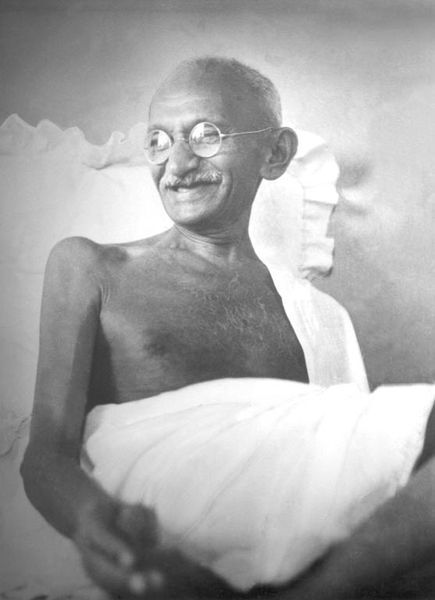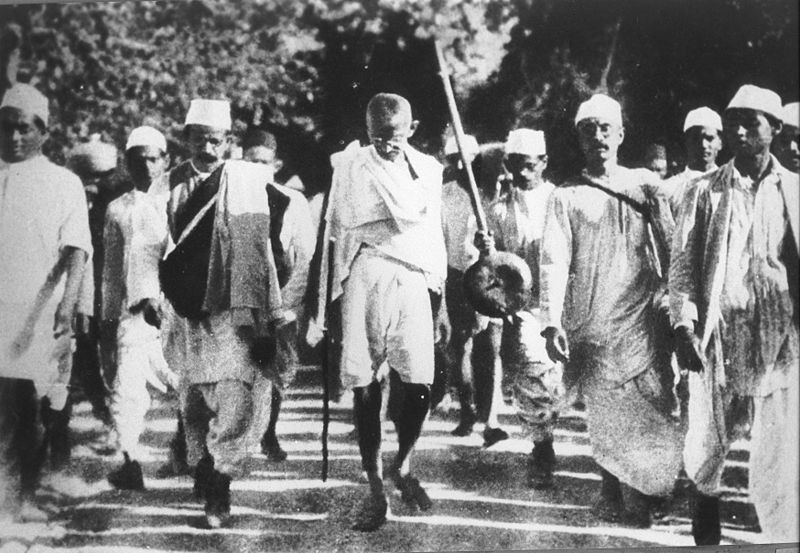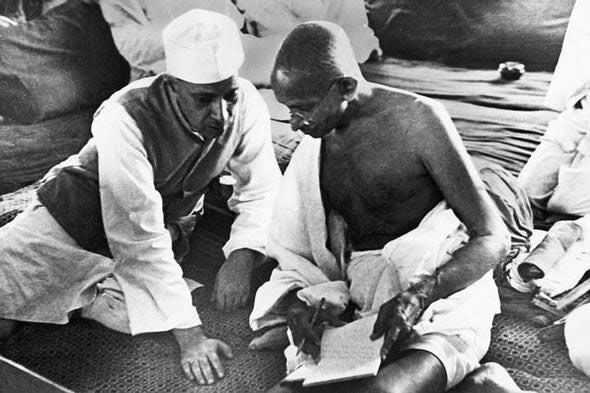Mohandas Karamchand Gandhi was born into a wealthy Indian family in 1869. Raised on Hindu values, he was introduced to other religions at an early age, and remained tolerant of them throughout his life. Married at 14, he left his wife and children to study law in London. As well as acquiring his legal training, he also learned a great deal about all religions. On his return to India in 1891, he was divided between Indian customs and Western values.
In 1894, he was sent to South Africa to defend the interests of an Indian company. There he discovered racial segregation and the domination of the British and Boers over the local population. He spent part of his time in South Africa fighting injustices and laws, making people aware of the importance of social union. In 1906, faced with new segregationist laws, Gandhi began a non-violent resistance movement. He was taken prisoner, and it was while in prison that he wrote Hind Swaras, in which he developed his theory of non-violent struggle.

In 1914, Gandhi returned to India, where he spent a year exploring his country.
During his journey, he took part in several struggles against injustices, fasting to exert pressure and demonstrate his solidarity.
He put into practice the principles of his non-violent struggle, the satyagraha. At the end of the First World War, the first demands for Indian autonomy began. Gandhi caused a major demonstration in April 1919, calling on people to cease all activity.
Inspired by this Gandhi-led protest, the population created a second demonstration a few days later. This time, things didn't go so smoothly, as the police didn't hesitate to shoot at the peaceful crowd. Over 300 people were killed and 1,000 injured. Following this event, Gandhi put an end to his political actions. He resumed his means of action in 1920. At that time, his actions were supported by both the Congress and the Muslim League. He called for non-cooperation with the British and a boycott of textiles imported from Europe.

Clashes between the crowd and the police increased significantly. Until the day when 22 policemen were attacked by the crowd, after which Gandhi once again put an end to his actions. After a 2-year imprisonment, the movement ran out of steam, but the population became divided. Gandhi called for social cohesion. To achieve this, he urged people to recognize the social equality of the Untouchables (Dalit). He had to stage two hunger strikes before this demand was respected. In the 1930s, Gandhi became increasingly influential. He began a march to denounce the British salt monopoly. Gandhi marched for 24 days, covering 350 kilometers, during which time the crowds that accompanied him grew ever larger.
Indian society is divided into four castes, which can be compared to social classes. Belonging to a caste is determined by the occupation in which one works. However, certain professions are excluded from these castes and are discriminated against (butchers, fishermen, midwives, etc.). These people are called the Untouchables (Dalit) and are excluded from the caste system.
At the end of his march, he announced the start of civil disobedience, only to be arrested again. He was released following an exchange in which other political prisoners were freed and the salt laws were abolished. For his part, Gandhi ended his civil disobedience and attended a conference in London. Unfortunately, it was also at this time that dissensions between communities became more pronounced. In 1934, Gandhi retired from political life, but continued to fight for cohesion between the communities. He wanted independence for a united India.
In 1939, Gandhi refused to join the British army in the Second World War. In his view, only an independent India could be useful. After starting a new civil disobedience movement, he was arrested again until 1944. After the violent events in Calcutta, Gandhi went on hunger strike to convince Indians to drop their weapons, and Nehru stopped the massacres just in time to prevent Gandhi from starving to death. On the other hand, the frustrations of the extremist movements only increased. Extremist Hindus found Gandhi too accommodating to Muslims.

On January 30, 1948, Gandhi was assassinated by an extremist who wanted the creation of a Hindu state rather than a secular multi-faith one. This followed four other attempts on his life. Gandhi is still an important figure today; he left behind a theory of pacifist struggle that would benefit from further use. During his political life, Gandhi was nicknamed Mahātmā, a word meaning great soul.